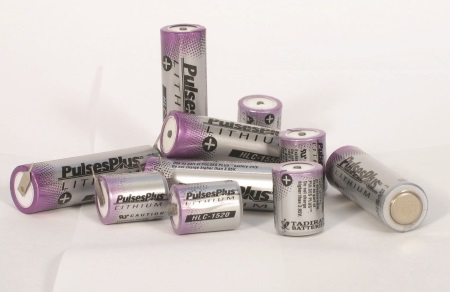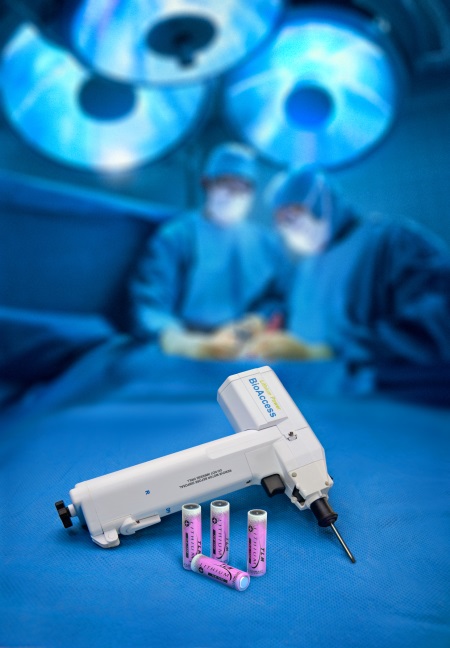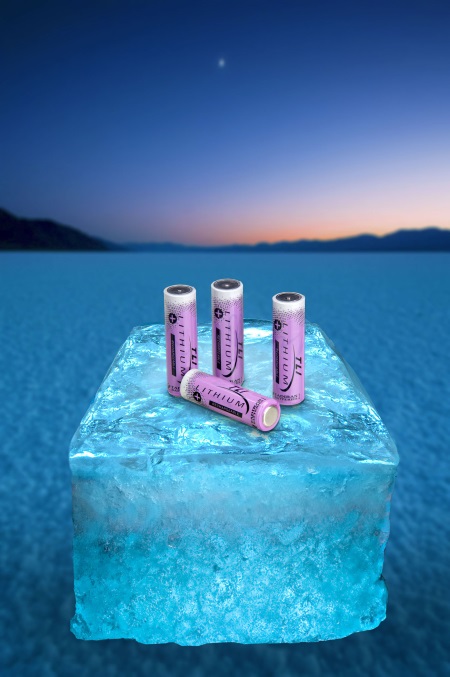Recent advancements in lithium battery technology, coupled with rapidly evolving medical instrumentation and wireless sensor technologies, have created a dynamic environment for innovative new product development.
As medical devices become increasingly sophisticated and miniaturized, demand is increasing for reliable and cost-effective power management solutions. Lithium batteries are at the forefront of this technological advancement.
First used in pacemakers during the 1960s, lithium batteries currently power a wide variety of medical devices, including automatic external defibrillators, surgical power tools, robotic cameras, RFID asset tags, infusion pumps, bone growth stimulators, glucose monitors, blood oxygen meters, and cauterizers.
Lithium batteries are often preferred because they deliver the highest specific energy (energy per unit weight) and energy density (energy per unit volume) of any battery type. Lithium cells, all of which use a non-aqueous electrolyte, also have nominal open circuit voltages of between 1.7 and 3.9 V. Lithium cells also feature extended operating temperature ranges, made possible by the absence of water and the chemical and physical stability of the materials.
Understanding lithium thionyl chloride chemistry
Of all the available lithium chemistries, bobbin-type Li/SOCl2 (lithium thionyl chloride) stands apart as being particularly well-suited for applications requiring a steady low current (micro amps to low milli amps) for extended period of time (up to 40 years) due to its high energy density, high capacity, and very low self-discharge rate. Typical applications include bone healers, oxygen meters, and glucose meters.
Bobbin-type Li/SOCl2 cells also offer the widest temperature range (–55ºC to 125ºC), making them ideal for use with high temperature autoclave sterilization as well as in the cold chain, where consistent temperatures as low as -90oC need to be maintained in order to preserve tissue samples, transplant organs, medical supplies, and pharmaceuticals that are frozen or shipped in dry ice.
Tadiran recently tested its bobbin-type Li/SOCl2 cells in a cryogenic chamber, subjecting these batteries to progressively lower temperatures down to -100°C, and the cells continued to operate as necessary.
Hybrid version powers high current pulse applications
A hybrid version of the bobbin-type Li/SOCl2 cell, called PulsesPlus (see Fig. 1 ), combines a standard lithium thionyl chloride battery with a hybrid layer capacitor to deliver high current pulses, offering an ideal solution for applications such as external defibrillators that can operate for extended periods with a low background current (sleep mode) followed by high current pulses (in the multi-amp range). Tadiran has also developed TRR Series batteries for moderate current pulse applications.

Fig. 1: PulsesPlus batteries combine lithium thionyl chloride chemistry have a hybrid layer capacitor (HLC) to deliver the high current pulses required by automatic external defibrillators (AEDs) and can remain dormant for extended periods but most operate reliably in an emergency.
The hybrid technology used in PulsesPlus batteries has also been adapted to Tadiran TLM Series batteries, which deliver high voltage, high energy density, instant activation, and exceptionally long operational life even in extreme temperatures. TLM Series batteries deliver an open circuit voltage of 4.0 V with high current pulses of up to 15-A and 5-A continuous current at 3.2 V for a limited time. Often used in disposable devices such as hand held surgical power tools and cautherizers, TLM Series batteries provide surgeons with an ergonomic solution, allowing the handheld device to be as small and as lightweight as possible.
For example, the original version of the BioAccess portable small bone drill was powered by alkaline battery packs that performed well and offered excellent reliability. However, the company sought to reduce overall weight and extend the power ceiling of the device by introducing an alternative version powered by a TLM battery pack (see Fig. 2 ), which resulted in a 36% weight reduction while also permitting more active drill time (30 to 40-s at a time, with 20 to 30 cycles) as well as more instantaneous power, as surgeons do not want to experience power delays when operating a medical device.

Fig. 2: The BioAccess portable small bone drill uses a TLM Series battery pack to provide surgeons with an ergonomic solution, including a 36% weight reduction, more active drill time (30 to 40 seconds at a time, with 20 to 30 cycles), and instantaneous power, compared to alkaline battery powered designs.
New option for rechargeable lithium ion
Numerous medical electronic devices are powered by lithium-ion rechargeable batteries, a technology that is continuously improving but still presents certain inherent drawbacks, including short operating life (maximum 5 years), low maximum cycle life (1,000 cycles), a high annual self-discharge rate (up to 60% per year), and a limited temperature range (0° to 60°C) with no possibility of charging at low and high temperatures.
To address these problems, Tadiran recently introduced TLI series (see Fig. 3 ) rechargeable lithium-ion batteries that use a modified version of Tadiran’s patented hybrid layer capacitor (HLC) to deliver higher current pulses in a smaller package than other commercial non-industrial-type cells. Additional performance benefits of TLI Series rechargeable batteries include 10-year service life, 5,000 recharge cycles, extremely low annual self-discharge (less than 5% per year), the ability to deliver high-current pulses (up to 5 A), plus a much wider temperature range (-40° to 85°C, with storage up to 90°C) with the ability to be recharged at extreme temperatures (10-hour rate).

Fig. 3: Tadiran’s new TLI Series improve upon rechargeable lithium-ion batteries by offering 10-year service life, 5,000 recharge cycles, extremely low annual self-discharge (less than 5% per year), a wider temperature range (-40° to 85°C, 90°C storage), as well as the ability to be recharged at extreme temperatures (10-hour rate).
Taking the heat
In addition to supporting the cold chain, Li/SOCl2 chemistry also performs well in extreme heat, making it ideal for use with autoclave or chemical sterilization systems. A prime example is the Awarepoint battery-powered radio frequency identification (RFID) (see Fig. 4 ) real-time location systems (RTLS) that continually monitor the location and status of medical equipment throughout medical facilities.

Fig. 4: Tadiran Li/SOCl2 batteries enable Awarepoint asset tracking devices to withstand +135°C temperatures for up to 500 autoclave sterilization cycles, thus reducing long-term maintenance costs. These batteries also operate at -90°C to support the cold chain, helping to ensure that frozen or refrigerated tissue samples, transplant organs, medical supplies, and pharmaceuticals are being properly preserved.
Environmental tests performed by Awarepoint indicated that the Li/SOCl2 battery used in their asset tracking device could withstand +135°C temperatures associated with standard autoclave cycles, and could work continuously for 500 steam sterilization cycles on the original battery to reduce long-term maintenance costs. The battery was compact, lightweight and powerful, delivering 0.55-Ah capacity at 0.5 mA. It was also is UL recognized, and considered non-hazardous when shipped.
Longer storage life
Li/SOCl2 chemistry is renowned for delivering exceptionally long-life, with certain batteries able to operate for up to 40 years. Extended battery life is a direct result of very low annual self-discharge, which is affected by the chemical composition of the electrolyte and the design of the cathode.
However, not all Li/SOCl2 batteries are created equal. For example, Tadiran bobbin-type Li/SOCl2 cells feature an average annual self-discharge rate of 0.7% whereas other brands using the exact same chemistry have a much higher annual self-discharge rate of 2.5% to 3.0% per year. For certain medical equipment such as automatic external defibrillators (AEDs) that remain dormant for extended periods yet need to perform reliably in an emergency, it is critically important to choose the Li/SOCl2 battery with the lowest possible annual self-discharge.
Through due diligence is required when specifying a battery in order to ensure that it will perform as promised. When evaluating batteries, design engineers should demand fully verifiable performance test data, customer lists and testimonials, and know that advanced manufacturing techniques are being employed to ensure consistent product quality, including Six Sigma and statistical process control (SPC) protocols.
Looking forward
Emerging applications in telematics and GPS tracking devices coupled with heart rate, temperature and other advanced sensors will enable healthcare providers to monitor the vital signs and precise whereabouts of patients in hospitals, nursing homes, assisted living quarters, or remote locations via satellite.
Advanced lithium battery technologies will support these emerging technologies with reliable, long-term power management solutions that meet the growing demands of a rapidly evolving industry.
Advertisement
Learn more about Tadiran





